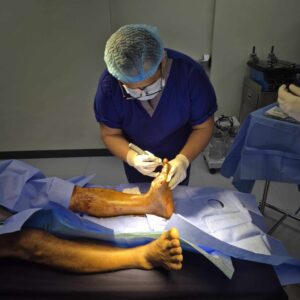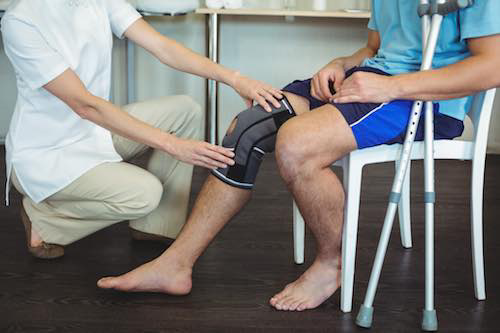Knee replacement surgery has given countless individuals the opportunity to walk, move, and enjoy life again without the constant burden of joint pain. While this procedure is highly effective, what you do afterward plays an equally important role in long-term success. One of the most crucial elements of recovery is knowing the right exercises to avoid after knee replacement. Not all forms of physical activity are safe, and some can delay healing, stress the artificial joint, or even cause damage.
Understanding which exercises to avoid after knee replacement empowers patients to recover safely, maintain the integrity of their implants, and enjoy the benefits of surgery for many years. This guide explores the movements that should be avoided, safer alternatives, and practical tips for ensuring a smooth, lasting recovery.
Understanding Knee Replacement Recovery
When a knee replacement is performed, the damaged parts of the knee joint are replaced with artificial components designed to mimic natural function. While highly effective, the new joint is not identical to the original and requires time to adapt. Muscles, ligaments, and surrounding tissues also need a gradual adjustment period.
During recovery, exercise plays a vital role in strengthening muscles, improving range of motion, and regaining independence. However, not all exercises are appropriate. Performing high-risk movements too soon or pushing the body beyond its limits can cause setbacks. Knowing the exercises to avoid after knee replacement is just as essential as learning which exercises to do.
Why Certain Exercises Should Be Avoided
Exercise after knee surgery must strike a delicate balance—enough activity to rebuild strength without placing unnecessary strain on the new joint. There are several reasons why doctors and physical therapists recommend avoiding certain movements:
- Stress on the artificial joint: High-impact or twisting motions can loosen implants or cause uneven wear.
- Risk of delayed healing: Aggressive exercises can irritate healing tissues and increase swelling.
- Higher chance of injury: Some exercises put patients at risk of falling or straining surrounding ligaments.
- Compromised outcomes: Ignoring advice on exercises to avoid after knee replacement may shorten the lifespan of the implant.
By focusing on safe, structured rehabilitation, patients can avoid complications and experience the full benefits of their surgery.
Exercises to Avoid After Knee Replacement
High-Impact Activities: Running, jogging, and jumping are some of the top exercises to avoid after knee replacement. These high-impact movements place repeated stress on the artificial joint, which can lead to premature wear or instability. Even after recovery, high-impact sports increase the risk of implant failure, making them unsuitable for long-term health.
Deep Bending and Twisting Exercises: Movements that require deep knee bending or twisting, such as lunges, squats, or certain yoga poses, are also exercises to avoid after knee replacement. These activities place unnecessary pressure on the knee joint, potentially stretching soft tissues beyond their safe range. Twisting motions, in particular, can be risky for stability and may compromise the implant.
Heavy Weightlifting: Exercises like heavy squats, leg presses, or deadlifts may seem like a way to strengthen the legs, but they are among the exercises to avoid after knee replacement. Lifting excessive weights places too much load on the new joint, which is still adapting to daily movement. Over time, repeated stress can weaken surrounding support structures or accelerate implant wear.
Contact or High-Risk Sports: Sports that involve sudden stops, collisions, or unpredictable movements—such as football, basketball, or skiing—are exercises to avoid after knee replacement. These activities increase the risk of falling, twisting, or suffering an impact that could damage the new joint. Even recreational participation in these sports carries risks that outweigh potential benefits.
High-Resistance Cardio Machines: While cardio is excellent for recovery, certain machines can work against healing. Stair climbers and steeply set elliptical trainers are exercises to avoid after knee replacement. They mimic high-stress climbing motions that overwork the joint and can delay recovery progress. Patients should opt for gentler, controlled forms of cardio until fully cleared by their physician.
Safe Alternatives to Support Recovery
Although there are exercises to avoid after knee replacement, many safe and effective options remain. These alternatives provide the benefits of strengthening and mobility without putting excessive strain on the new joint.
- Walking: A simple, low-impact activity that helps restore movement and endurance. Patients can gradually increase walking time and distance as strength builds.
- Swimming or water therapy: The buoyancy of water reduces joint stress while still offering resistance for strength and flexibility.
- Cycling on a stationary bike: A safe option for rebuilding leg muscles and improving circulation without impact.
- Gentle stretching and strengthening exercises: When guided by a physical therapist, these help restore function while protecting the implant.
At the Hips and Knees Joint Restoration and Replacement Center, international patients benefit from personalized rehabilitation plans designed to promote healing while respecting each patient’s unique needs. These programs ensure safe activity choices while avoiding risky exercises.
Tips for Safe and Effective Exercise After Knee Replacement
Patients recovering from knee surgery often wonder how to strike the right balance between rest and activity. While it’s important to stay active, safety should always come first. Here are some practical tips:
- Follow professional guidance: Always perform exercises recommended by your surgeon or physical therapist.
- Start slow and progress gradually: Intensity and duration should increase step by step to avoid strain.
- Prioritize consistency over intensity: Steady, daily effort is more effective than sporadic bursts of exercise.
- Listen to your body: Pain is a warning sign; discomfort may indicate that an exercise is too demanding.
- Focus on overall fitness: Core strength, flexibility, and balance exercises all contribute to long-term joint health.
By understanding the exercises to avoid after knee replacement and choosing safe alternatives, patients can confidently progress in their recovery journey.
How Our Center Helps International Patients Recover Safely
Patients from the USA, Australia, New Zealand, and the UK often travel to the Philippines to receive world-class orthopedic care at more affordable rates. At the Hips and Knees Joint Restoration and Replacement Center, we specialize in advanced techniques such as the Direct Anterior Approach, which allows for faster recovery and less post-surgical discomfort.
Beyond surgery, our comprehensive care includes:
- Priority scheduling for quicker procedures.
- Telemedicine follow-ups to monitor progress.
- Personalized rehabilitation programs to guide safe recovery.
- Comfortable accommodations designed for healing.
Our approach ensures patients not only receive excellent surgical outcomes but also avoid complications by learning which exercises to avoid after knee replacement.
Takeaway
Recovering from knee surgery is not just about undergoing the procedure—it’s about making the right choices afterward. By understanding which exercises to avoid after knee replacement, patients protect their new joint, reduce the risk of setbacks, and enjoy long-lasting mobility. With safe activity, guided rehabilitation, and expert care from centers like the Hips and Knees Joint Restoration and Replacement Center, living an active, pain-free life becomes a reality.
Frequently Asked Questions
Can I ever return to running after knee replacement?
Running is generally not recommended, as it is one of the key exercises to avoid after knee replacement. Low-impact alternatives like swimming or cycling are safer long-term.
How long should I wait before starting exercise post-surgery?
Most patients begin gentle movements within days of surgery under supervision. However, knowing the right exercises to avoid after knee replacement ensures safe progress.
Is cycling safe after knee replacement?
Yes, cycling on a stationary bike is usually encouraged, provided resistance is kept low and progression is gradual.
Can I lift weights after knee replacement surgery?
Light resistance training may be introduced over time, but heavy weightlifting is one of the exercises to avoid after knee replacement. Always consult your therapist before adding weights.
What happens if I accidentally perform an exercise that stresses my knee?
Mild discomfort may pass, but persistent pain, swelling, or instability should be reported to your doctor. Avoiding harmful exercises protects the implant and speeds recovery.











